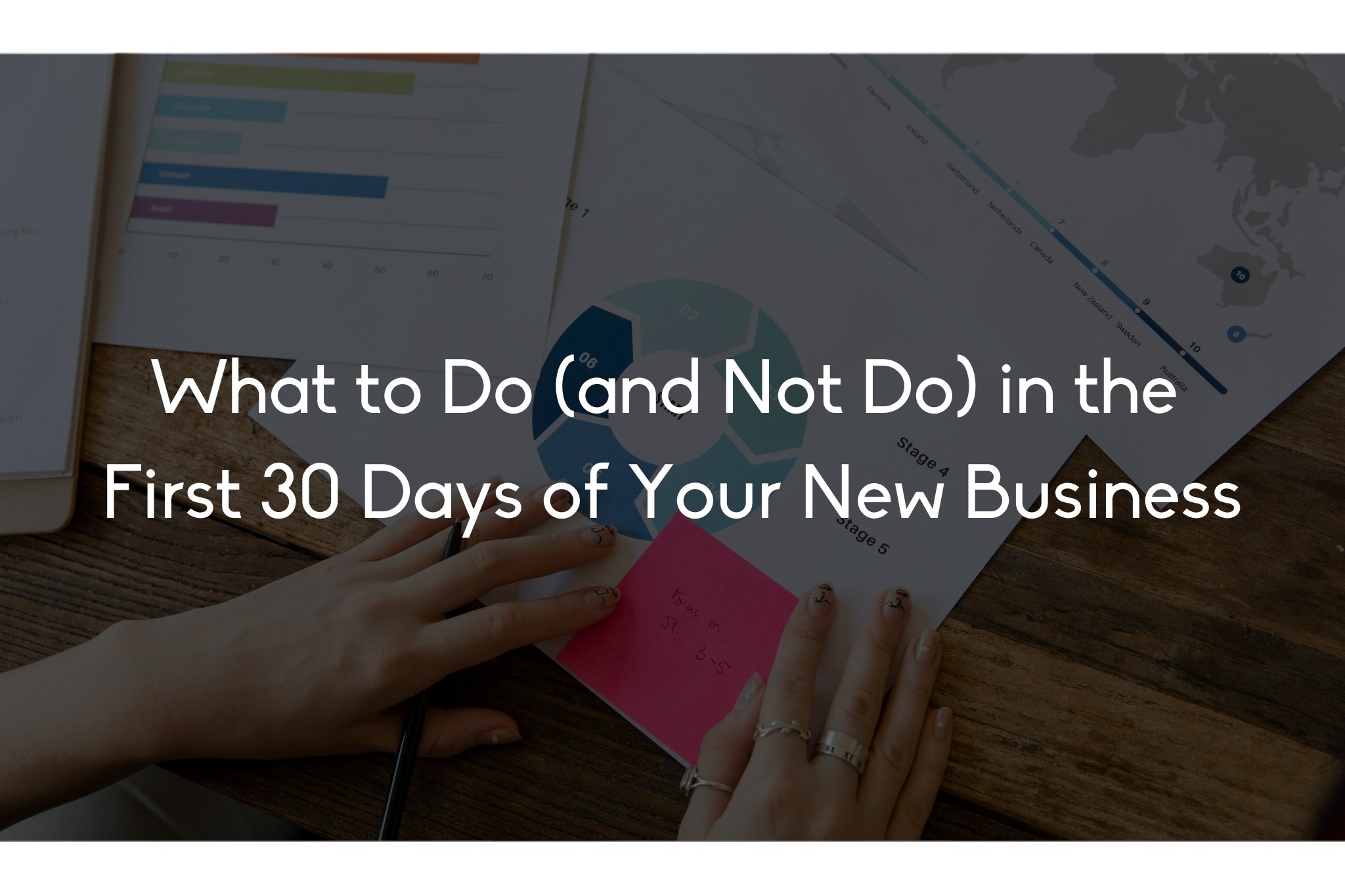

Starting a business is exciting. You’ve got big ideas, a vision for success, and a strong drive to make it happen. But if you’re like most entrepreneurs, the first 30 days can feel overwhelming. There’s so much to do—where do you even start?
The truth is, those first few weeks can make or break your momentum. Some business owners set themselves up for long-term success by focusing on the right things, while others waste time on tasks that don’t move the needle.
So, what should you prioritize in your first month? And just as importantly, what should you avoid?
Let’s break it down.
You might think you already have a solid business idea—but have you tested it? Many entrepreneurs skip the validation phase, only to realize later that they’re selling something people don’t really want or need.
What to do:
Action step: Talk to potential customers. Ask them what they struggle with and what kind of solution they’d actually pay for. This will save you from launching a product or service that falls flat.
It’s tempting to jump right into selling, but before you start making money, you need to make sure your business is set up legally and financially.
What to do:
Action step: Don’t overcomplicate this process. Start with the simplest business structure that fits your needs, and you can always evolve it later.
Forget the 100-page business plans. In the early days, you need a short and focused plan to guide your first steps.
What to include:
Action step: Write a one-page business plan that outlines your vision, target audience, and revenue model.
In today’s digital world, people will Google you before they buy from you. That means you need at least a basic online presence from Day 1.
What to do:
Action step: Don’t overthink it—use website builders like Wix or Squarespace to get a simple site up in a day.
A common mistake new entrepreneurs make? Waiting too long to market their business. The sooner you start getting the word out, the sooner you’ll get customers.
What to do:
Action step: Set a goal to get at least 100 people interested in your business in the first 30 days.
The last thing you want is to feel buried in admin work when you should be focusing on growth. Get basic systems in place early.
What to do:
Action step: Spend one day setting up these systems—it’ll save you weeks of frustration later.
Nothing validates your business more than actual paying customers. Instead of spending months perfecting your offer, start selling.
What to do:
Action step: Set a goal to land your first 3–5 paying customers within the first month.
Your logo, website, or product doesn’t have to be perfect before you launch. Many entrepreneurs spend weeks tweaking things that don’t matter yet.
Mistake: Spending 10 hours choosing the perfect font.
✅ Better Approach: Pick something simple and refine it later.
Just because you can do something doesn’t mean you should. If you try to handle marketing, sales, admin, and operations all by yourself, you’ll burn out.
Mistake: Wearing too many hats and refusing to delegate.
✅ Better Approach: Outsource tasks like admin work to a virtual assistant.
It’s easy to get caught up in buying fancy tools, hiring too early, or spending money on ads without a strategy.
Mistake: Investing in expensive software before validating your business.
✅ Better Approach: Spend money only on things that directly impact growth.
Running out of cash is one of the top reasons new businesses fail.
Mistake: Not tracking expenses or separating personal and business finances.
✅ Better Approach: Set up a budget and monitor cash flow every week.
Social media is great, but it shouldn’t be your only marketing channel.
Mistake: Assuming Instagram alone will bring in sales.
✅ Better Approach: Combine social media with email marketing, networking, and partnerships.
It’s tempting to try every new strategy you hear about, but that leads to inconsistency.
Mistake: Constantly switching business models.
✅ Better Approach: Pick a strategy, execute it well, and analyze results before pivoting.
The first month of your business is all about laying a strong foundation. If you focus on the right tasks—getting customers, setting up systems, and building a brand—you’ll be in a much stronger position moving forward.
Key Takeaways:
If you’re feeling overwhelmed, consider bringing in a virtual assistant to help with admin, marketing, or operations. You don’t have to do this alone.
Now, it’s time to take action. What’s the first step you’ll take today?